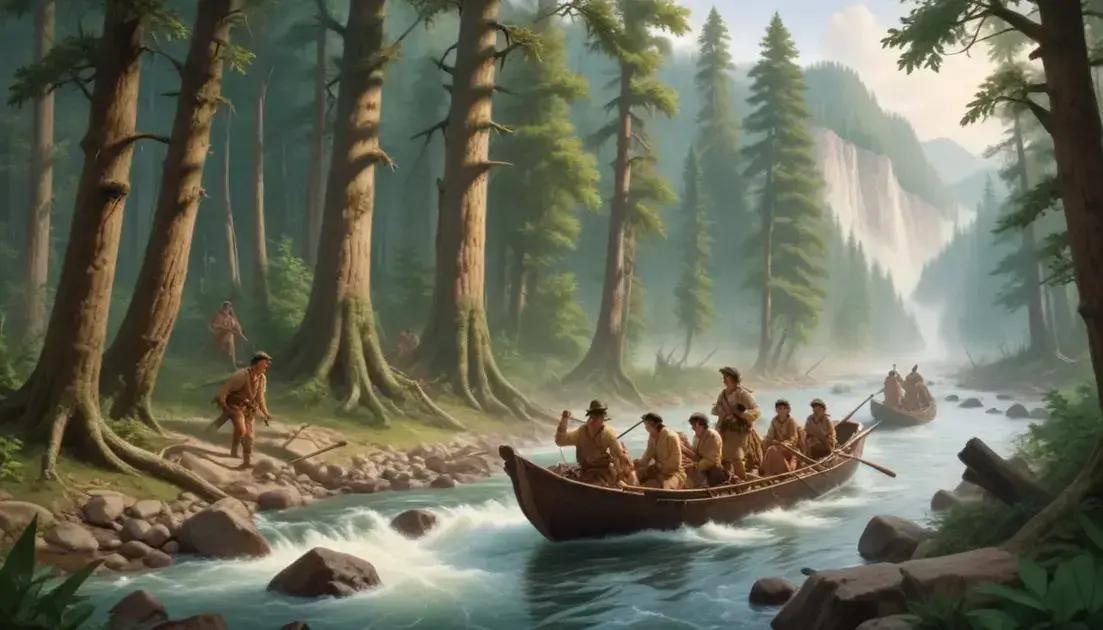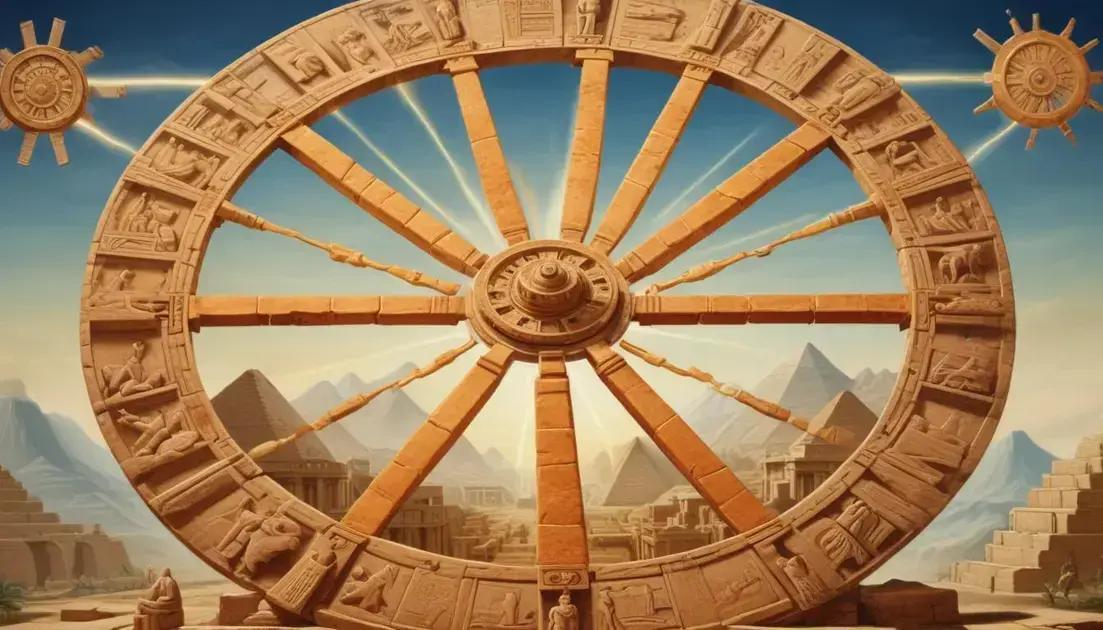
Neolithic Revolution: From Hunting and Gathering to Agriculture and Domestication
The Neolithic Revolution marked a pivotal era in human history, transitioning societies from a nomadic hunter-gatherer lifestyle to settled agricultural practices. This shift enabled the domestication of plants and animals, leading to population growth, the formation of villages, and complex social structures. As agricultural methods evolved, trade networks expanded, fostering cultural exchanges that shaped modern civilizations. Understanding the long-term effects of this revolution helps us appreciate current societal foundations and environmental challenges.
The Neolithic Revolution marked a pivotal shift in human history, transitioning from nomadic lifestyles to settled agriculture. How did these changes shape our societies today?
Understanding the Neolithic Revolution
The Neolithic Revolution was a major turning point for humanity. It marked the change from hunting and gathering to farming. This shift allowed people to settle in one place and build communities.
What Happened During the Neolithic Revolution?
During this time, humans started to cultivate crops. They began growing grains like wheat and barley. This practice gave rise to agriculture and changed how people lived.
The Birth of Farming
Farming changed everything! It provided a steady food supply. With more food, populations grew. Communities became larger as families settled around their fields.
Domesticating Animals
Along with crops, people also began to tame animals. Sheep, goats, and cattle were domesticated for food and labor. These animals played a key role in helping societies flourish.
Impact on Society
The shift to farming meant that people had more free time. They could specialize in different jobs, such as tool-making or weaving. This led to new skills and technologies.
Advantages of Settling Down
Living in one place allowed for better planning and organization. People could build homes and develop infrastructure. It also led to trade as communities exchanged goods for survival.
Challenges Faced
Despite the benefits, settlers faced challenges. New diseases appeared because of close contact with animals. Also, some communities began to fight over resources like water and land.
The Neolithic Revolution set the stage for future civilizations. It changed how humans lived and interacted with their environment, leading to the world we know today.
Key Changes in Agriculture
The Neolithic Revolution brought major changes in agriculture. People shifted from foraging to farming. This was a big deal for their survival.
Cultivation of Crops
Farmers learned to grow their own food. They planted seeds and nurtured crops like wheat and barley. This development allowed communities to produce food consistently.
Swapping Plants for Meat
As farming grew, people ate less wild game. They focused on crops and domesticated animals. This new diet fueled population growth and health improvements.
Seasonal Planning
Agriculture required planning. Farmers learned to follow seasons and weather patterns. This knowledge helped them know when to plant and harvest their crops.
Using Tools and Techniques
Advancements in tools were key to agricultural success. People created hoes and sickles for planting and harvesting. These tools made farming easier and more efficient.
Impacts on Community Life
With more food available, communities could grow in size. This led to a division of labor. Some people farmed, while others focused on crafts or trade.
Storage Solutions
Farmers had to store their surplus crops. They built granaries to protect grain from pests and weather. This ensured food was available year-round.
The changes in agriculture during the Neolithic Revolution laid the groundwork for future civilizations. It transformed how people lived and interacted with the world around them.
The Domestication of Animals
The domestication of animals was a game-changer during the Neolithic Revolution. Instead of hunting wild animals, people started to tame them. This shift brought about many benefits.
What Animals Were Domesticated?
Early farmers focused on a few key animals. They domesticated sheep, goats, cattle, and pigs. These animals provided meat, milk, and wool—essential resources for survival.
The Benefits of Domesticated Animals
Having domesticated animals made farming easier. They could help with heavy tasks, like plowing fields. This increased the amount of land people could farm.
Food Security
Domestication also provided a steady food supply. Farmers could raise animals for milk, eggs, and meat. This helped communities grow and thrive.
Wool and Other Resources
Animals like sheep offered wool for clothing. This meant that people could create textiles and trade them. This trade built stronger communities and connections.
Impact on Lifestyle
With animals around, people’s lifestyles changed. They became more settled and less nomadic. This new way of living let them build villages and develop cultures.
Challenges of Domestication
Domestication wasn’t without its challenges. Humans had to learn how to care for these animals properly. They faced issues like disease and environmental factors that could affect their livestock.
The domestication of animals during the Neolithic Revolution helped shape human society. It played a vital role in transforming communities into thriving agricultural societies.
The Impact on Early Societies
The Neolithic Revolution had a huge impact on early societies. As people began to farm, their whole way of life changed. They moved from small bands to larger communities.
Population Growth
With more food available, populations grew rapidly. Families could settle in one place and raise more children. More people meant more hands to help with farming and building.
Formation of Villages
As populations grew, early societies built villages. These villages became centers for social life and trade. People shared resources, ideas, and skills.
Development of Social Structures
Agriculture changed how people organized themselves. Some became farmers, while others specialized in crafts or trade. This division of labor led to different roles in society.
Creation of Trade Networks
With villages developing, trade emerged. People exchanged surplus goods with others. This spread resources like pottery and textiles to different communities.
Cultural Exchange
As trade increased, so did cultural exchange. People shared stories, art, and traditions. This helped create a rich tapestry of cultures and influenced future societies.
Challenges Faced
Early societies faced challenges, too. They had to deal with food shortages, conflicts over land, and disease. However, their ability to adapt helped them survive and thrive.
The changes brought by the Neolithic Revolution laid the groundwork for complex societies. These early communities set the stage for future civilizations around the world.
Comparative Analysis of Hunter-Gatherer and Agricultural Lifestyles
Understanding the differences between hunter-gatherer and agricultural lifestyles reveals much about human history. Each way of life had its own strengths and challenges.
Hunter-Gatherer Societies
Hunter-gatherers were nomadic. They moved around to find food, following animal migrations and seasonal plants. This lifestyle required deep knowledge of nature.
Food Sources
Their diet included wild fruits, nuts, and meat from hunted animals. This gave them a varied and balanced diet. However, food availability could be unpredictable.
Social Structure
Hunter-gatherer groups were typically small, often family-based. They relied on collaboration for survival. Sharing food was essential for building strong bonds.
Agricultural Societies
With agriculture, people settled down. They started growing crops and domesticated animals. This change led to more stable food supplies and larger populations.
Impact on Daily Life
Agricultural life allowed for new job opportunities. People could specialize in crafts, trade, or leadership roles. This division of labor helped communities develop.
Environmental Impact
Agriculture changed landscapes. Forests were cleared to make room for fields. While this increased food production, it also posed environmental challenges like soil depletion.
Health and Nutrition
Hunter-gatherers often had better health than early farmers. Agriculture led to a diet that was less diverse. This sometimes caused nutritional deficiencies.
Both lifestyles shaped human development. The choice between hunting-gathering and farming created diverse paths for societies across the globe.
Long-term Effects on Modern Society
The Neolithic Revolution has long-lasting effects on modern society. The changes from this period still influence our lives today.
Foundation of Agriculture
With agriculture beginning during the Neolithic period, farming remains a key aspect of life. It provides food for billions of people globally. We rely on the same principles of planting and harvesting learned long ago.
Urban Development
The shift to farming led to large settlements. These early villages grew into cities. Modern urban life, with its complex structures, traces back to this time.
Social Structures
Communities began to form social hierarchies. Certain roles emerged, such as leaders, artisans, and farmers. These social structures have evolved but still exist in varying forms today.
Trade Relationships
The Neolithic era sparked the rise of trade. The exchange of goods became essential for survival. Modern economies still depend on trade and commerce for growth and development.
Cultural Exchange
As people settled and interacted, they shared ideas. This exchange shaped traditions, languages, and customs. Today, cultural diversity thrives due to these early interactions.
Environmental Impact
Agricultural practices initiated during the Neolithic affect our environment. Deforestation and soil use patterns began back then. These impacts are ongoing and require careful management today.
The long-term effects of the Neolithic Revolution are profound. They shaped our food systems, cities, cultures, and environmental practices. Understanding this history helps us navigate current challenges.
Conclusion
In conclusion, the Neolithic Revolution was a key turning point in human history. It transformed how people lived and interacted with their environment. As we explored, agriculture, the domestication of animals, and the growth of communities all shaped early societies.
These changes laid the foundation for our modern world. From the food we eat to the cities we live in, the impacts are still noticeable today. Understanding this period helps us appreciate the challenges we face now.
By learning from the past, we can make better decisions for a sustainable future. The lessons of the Neolithic Revolution remind us of the importance of innovation, cooperation, and respect for the environment as we move forward.


